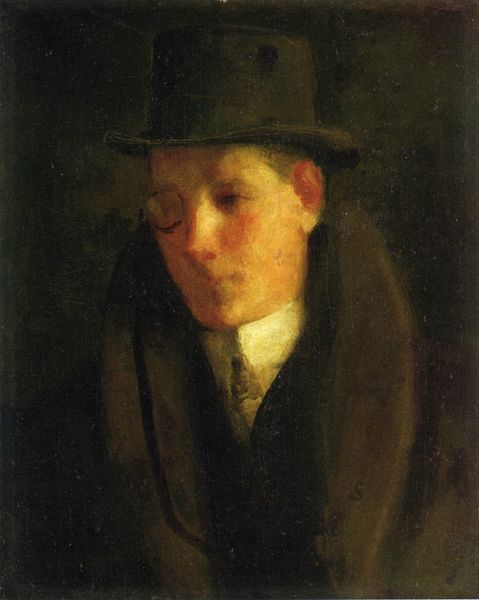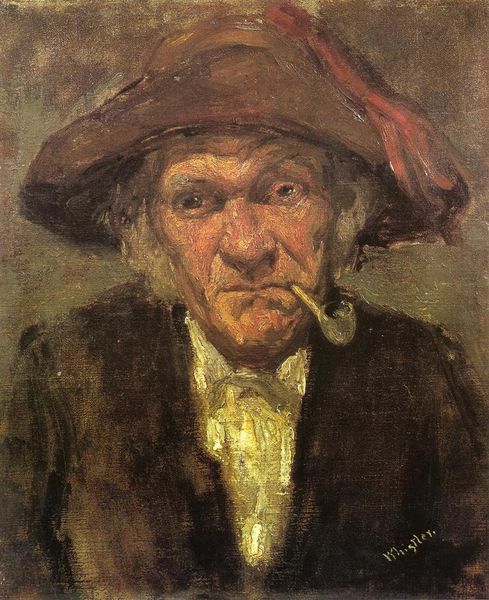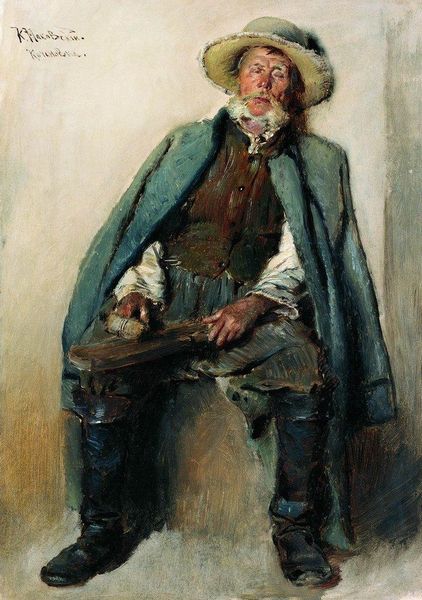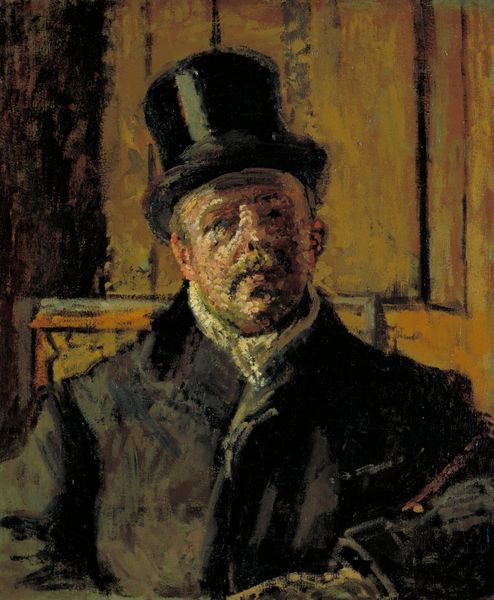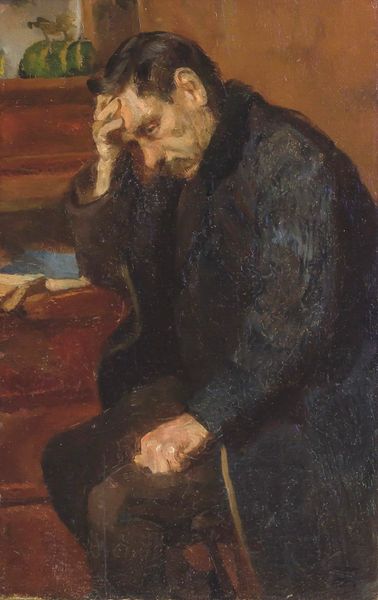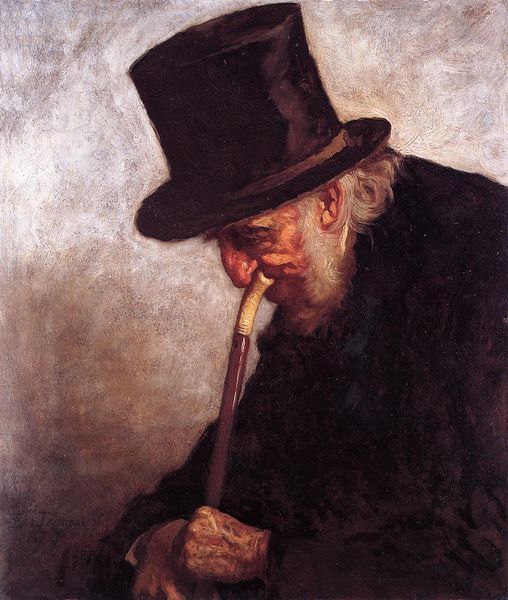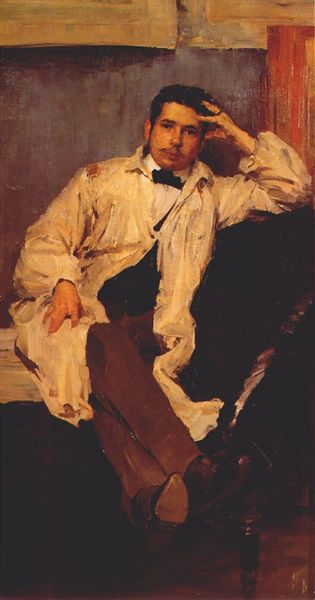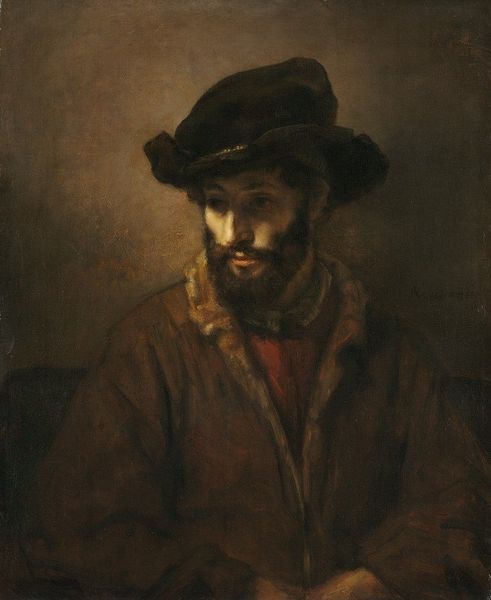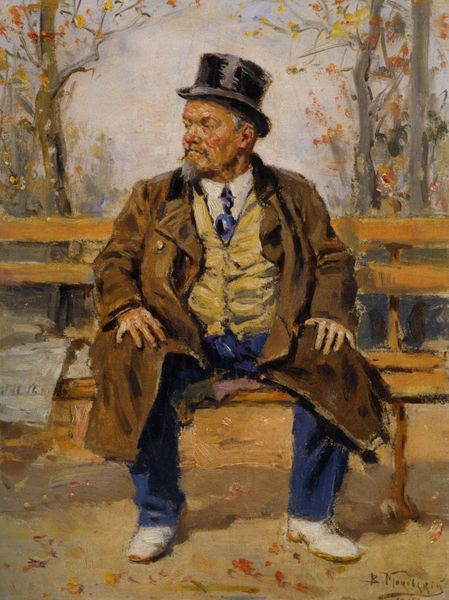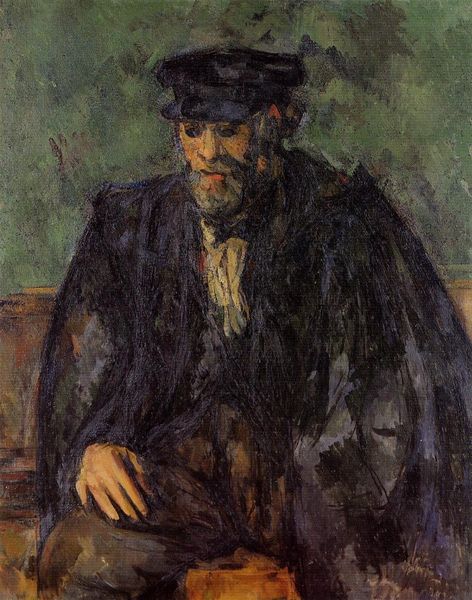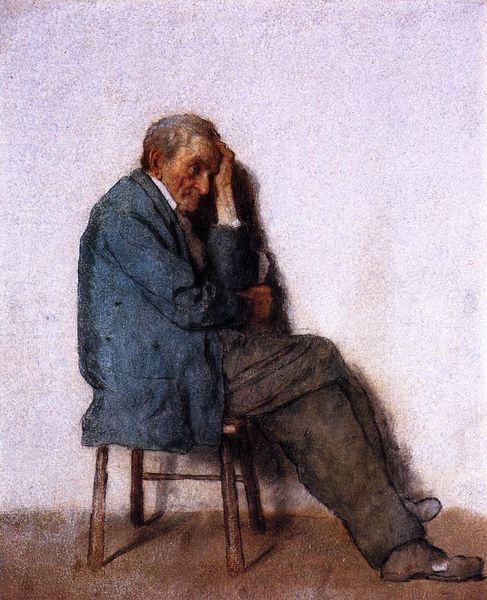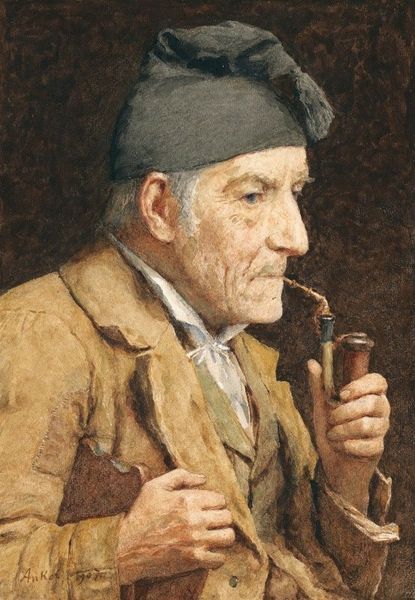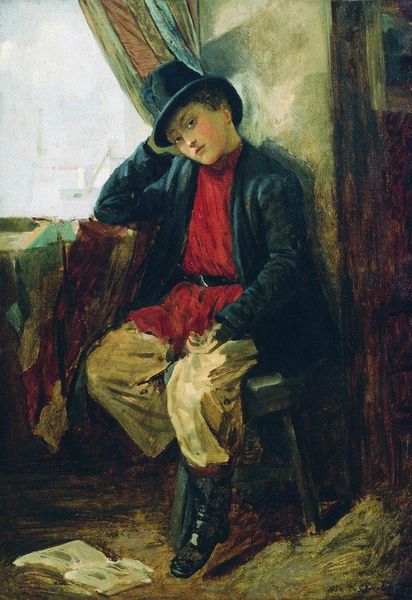
oil-paint
#
portrait
#
impressionism
#
oil-paint
#
charcoal drawing
#
oil painting
#
portrait reference
#
hudson-river-school
#
portrait drawing
#
realism
Copyright: Public domain
Curator: This is Eastman Johnson’s "Captain Nathan H. Manter," painted in 1873. It's an oil on canvas portrait. Editor: The somber palette really sets the tone. It’s contemplative, almost melancholic, the way the figure's face is cast in shadow beneath the hat. It speaks to something deeper than just a representation. Curator: Johnson's work frequently captures a particularly American narrative, steeped in ideas of community, work and class. A portrait like this allows us to see how status was performed, through elements like the hat and carefully chosen attire. It’s worth remembering that Eastman Johnson himself, although celebrated for his sensitive portrayal of everyday life, navigated a complex racial landscape himself, both reflecting and, at times, perhaps reinforcing prevailing social structures. Editor: Exactly. And beyond that specific socio-economic context, the downward gaze, the closed posture… there’s a weight to this individual. You sense a life fully lived, experiences marked onto the face. I see not just a captain, but perhaps a father, a community member shaped by his era. The brushstrokes also convey such a sense of the time—they are quite thick in certain spots. Curator: He was quite in demand for his portraits among prominent families. Here, though, there's a simplification of form, typical of Eastman's signature realism; however, in his brushstrokes there's something very intimate, quite subtle and telling regarding Manter as subject of the artwork. Johnson manages to convey not just likeness, but also the psychological dimension, how external pressures intersect the sense of one’s self. This approach can spark fruitful dialogue regarding our current considerations about identity, gender roles and class within our shared understanding of social mobility nowadays. Editor: That’s a brilliant connection. It makes one consider, how do the markers of success and identity manifest themselves today and how will future artists capture these narratives? Food for thought indeed. Curator: Art has an enormous ability to tell the stories of people’s lives but more importantly to raise questions which invite visitors to make connections to the now. Editor: Absolutely. Hopefully, encounters like these invite each and every viewer to reflect on the ever-evolving society around them.
Comments
No comments
Be the first to comment and join the conversation on the ultimate creative platform.
